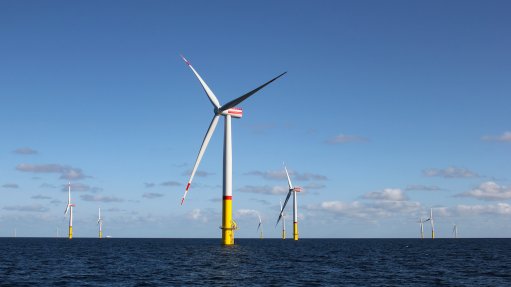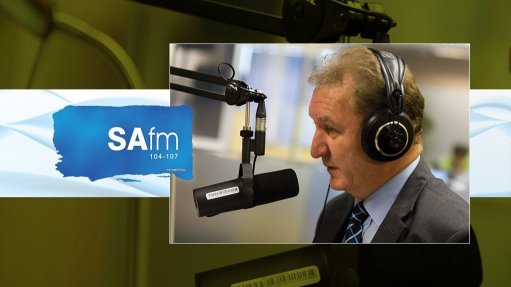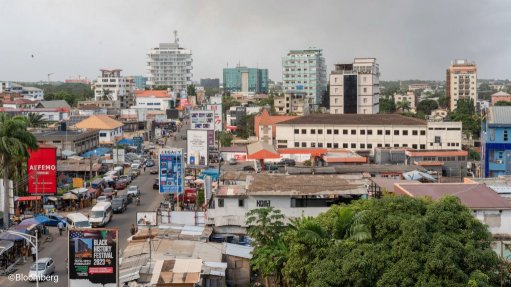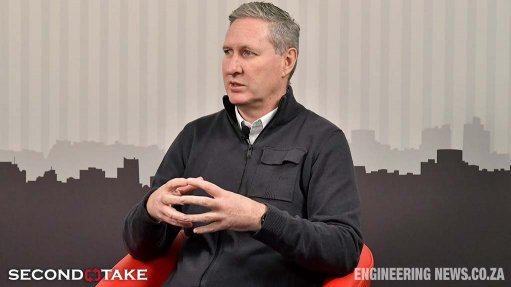Escape crippling electricity cost increases with solar
This article has been supplied by the author and has not been written or solicited by Creamer Media. It may be available only for a limited time on this website.
By Teresa Kok, Director of One Energy
While grid electricity costs are heading for R4/kwh and more, solar comes in at under R1.00/kWh fixed for the next 15-20 years
Residents of major metros across South Africa are paying massive, double digit increases on their electricity bills from 1 July – with the average increase for key industrial and urban electricity tariffs at 13.29%.
Every single municipal cost-of-supply study, and Eskom’s inevitable death spiral as more users defect from the grid and its revenue base plummets, confirms that the double digit, above-inflation and extortionate electricity tariff hikes are here to stay for years to come.
As electricity customers respond by moving to self-generation and alternative energy sources, including rooftop solar PV, battery energy storage, gas for cooking and solar geysers, the cost of Eskom’s electricity supply will continue to escalate at massive above inflationary increments as Eskom – and municipalities – scramble to make up for the declining sales volumes to cover their fixed costs and debt-burden.
The reality is that while grid electricity costs are now heading for R4/kwh and more, solar comes in at under R1.00/kWh fixed for the next 20 years, with many solar users amortising their system costs in under 4 years, and then enjoying completely free electricity for another 15 years and more.
Your grid cost trajectory if you do nothing
Taking a conservative viewpoint that Eskom will continue to increase prices by at least 12% and that municipalities are likely to add a further 2-3% on top of this - so a 15% increase per annum, the bad news is summarised below, without any solar intervention. In less than four years, your monthly electricity bill will double.
What can I expect to save with a solar PV system?
Residential case study: Current electricity bill of R3000 (around 810kWh per month / 27kWh per day, based on tariff of R3,70/kWh).
- Invest in 5kW Fox ESS hybrid inverter, with 10kWh of battery back-up and a 5kW solar array at a cost of R140 000.
- Solar PV system generates on average 25kW per day (750kW per month).
- Batteries provide 9kWh of usable back-up power to essential and night-time loads.
- Solar system takes you 95% off the grid - that’s R2800/pm that you won’t be paying on your municipal electricity account. That’s R33 600 per year, in year 1, without factoring in tariff increases.
- Your solar system fully pays for itself in 4 years. After this, every kWh your system generates is free electricity and an incredible investment in your grid independence and financial security.
- On our solar finance option, or rent-to-own option, over 72 months, your monthly repayments will be around R3000 per month (subject to your credit rating and rates applied). By year 2, you’ll be paying less on your finance repayments than you would be on grid-electricity costs, and putting money back in your pocket.
- There is no annual escalation in either the solar finance or rent-to-own solution and you fully own your system at the end of the finance period, with no hefty buy-out clauses or penalties for early settlement.
- With no solar intervention, you would have spent R280k on grid-electricity costs over five years, double the cost of your R140k solar system, with absolutely zero return on investment or ongoing financial benefit to you.
How do we get to less than R1.00/kWh fixed for 20 years?
- Using the above example, you will generate 9000 kWh in the first year.
- At a 1% efficiency decline per annum, you will generate 80% of this - 7200 kWh in year 20.
- So the average over 20 years is 8100kWh per annum x 20 = 162 000 kW over 20 years.
- The cost of the system is R140 000 so the average cost per kWh is R0,86 fixed for 20 years. And even after 20 years, your panels will still generate at 80% of the initial efficiency.
Commercial case study: Business with current electricity bill of R18 500 (around 5000kW per month) based on tariff of R3,70/kWh).
- Invest in a 30kW Fox ESS hybrid inverter, with 32kWh of battery back-up and a 30kW solar array at a cost of R510 000.
- PV system generates on average 156kW per day (4680kW per month).
- Batteries provide 26kWh of usable back-up power to essential and night-time loads.
- Solar system takes you around 95% off the grid – in monetary terms, that’s R17300/pm that you won’t be paying on your municipal electricity account. That’s R207 600 per year in year 1, without factoring annual grid cost increases.
- Your solar system will fully pay for itself in 2.5 years! After that, every kWh your system generates is free electricity - an incredible investment in massive cost savings that every business needs! And you will have secured your electricity costs and security of supply for your business.
- With no intervention, your business would have spent R1.6million on grid-electricity costs over five years. That’s more than three times the cost of your solar PV system, with absolutely zero return on investment or ongoing financial benefit to your business.
- On a rent-to-own option for business, over 72 months, your monthly repayments will be around R11 100 per month (subject to your business credit rating and interest rates applied). This repayment is much less than what you are saving on monthly electricity costs!
- Your monthly rental payments are fully amortised by your monthly savings on your electricity costs with R7000 spare change, you fully own the system at the end of the rent-to-own period with the payment of just one month’s additional rental, and there is no annual escalation in the rental with One Energy’s rent-to-own solution.
- As another big financial incentive, your business can take advantage of the Section 12B tax incentive. Section 12B of the Income Tax Act No. 58 of 1962 allows for a tax deduction in respect of certain qualifying assets (owned and brought into use after 1 January 2016) to reduce the taxable income of the taxpayer. These qualifying assets must be used for purposes of trade in the generation of electricity from renewable sources. For the period 1 March 2023 to 28 February 2025, the Section 12B allowance has been increased from 100% to 125% and no maximum cap on the output of the solar installation.
- If your business is VAT registered, you can claim/offset the input VAT back against your output Vat for the business.
In both case studies, the key benefit is that you are redirecting your grid electricity spend – a pure consumption cost – to acquiring a solar asset that will continue to generate savings and energy independence for many years after the finance term is settled, and you get to hedge your electricity costs for the lifespan of your system. It’s the kind of financial and energy security that every home and business needs – and it makes a significant contribution to reducing your carbon footprint and environmental impact. It’s a win-win-win.
One Energy is a multiple award-winning and market leading solar energy franchise established in 2011 with a national footprint of 19 branches and over 14 000+ perfect solar installations to date.
Comments
Press Office
Announcements
What's On
Subscribe to improve your user experience...
Option 1 (equivalent of R125 a month):
Receive a weekly copy of Creamer Media's Engineering News & Mining Weekly magazine
(print copy for those in South Africa and e-magazine for those outside of South Africa)
Receive daily email newsletters
Access to full search results
Access archive of magazine back copies
Access to Projects in Progress
Access to ONE Research Report of your choice in PDF format
Option 2 (equivalent of R375 a month):
All benefits from Option 1
PLUS
Access to Creamer Media's Research Channel Africa for ALL Research Reports, in PDF format, on various industrial and mining sectors
including Electricity; Water; Energy Transition; Hydrogen; Roads, Rail and Ports; Coal; Gold; Platinum; Battery Metals; etc.
Already a subscriber?
Forgotten your password?
Receive weekly copy of Creamer Media's Engineering News & Mining Weekly magazine (print copy for those in South Africa and e-magazine for those outside of South Africa)
➕
Recieve daily email newsletters
➕
Access to full search results
➕
Access archive of magazine back copies
➕
Access to Projects in Progress
➕
Access to ONE Research Report of your choice in PDF format
RESEARCH CHANNEL AFRICA
R4500 (equivalent of R375 a month)
SUBSCRIBEAll benefits from Option 1
➕
Access to Creamer Media's Research Channel Africa for ALL Research Reports on various industrial and mining sectors, in PDF format, including on:
Electricity
➕
Water
➕
Energy Transition
➕
Hydrogen
➕
Roads, Rail and Ports
➕
Coal
➕
Gold
➕
Platinum
➕
Battery Metals
➕
etc.
Receive all benefits from Option 1 or Option 2 delivered to numerous people at your company
➕
Multiple User names and Passwords for simultaneous log-ins
➕
Intranet integration access to all in your organisation

















